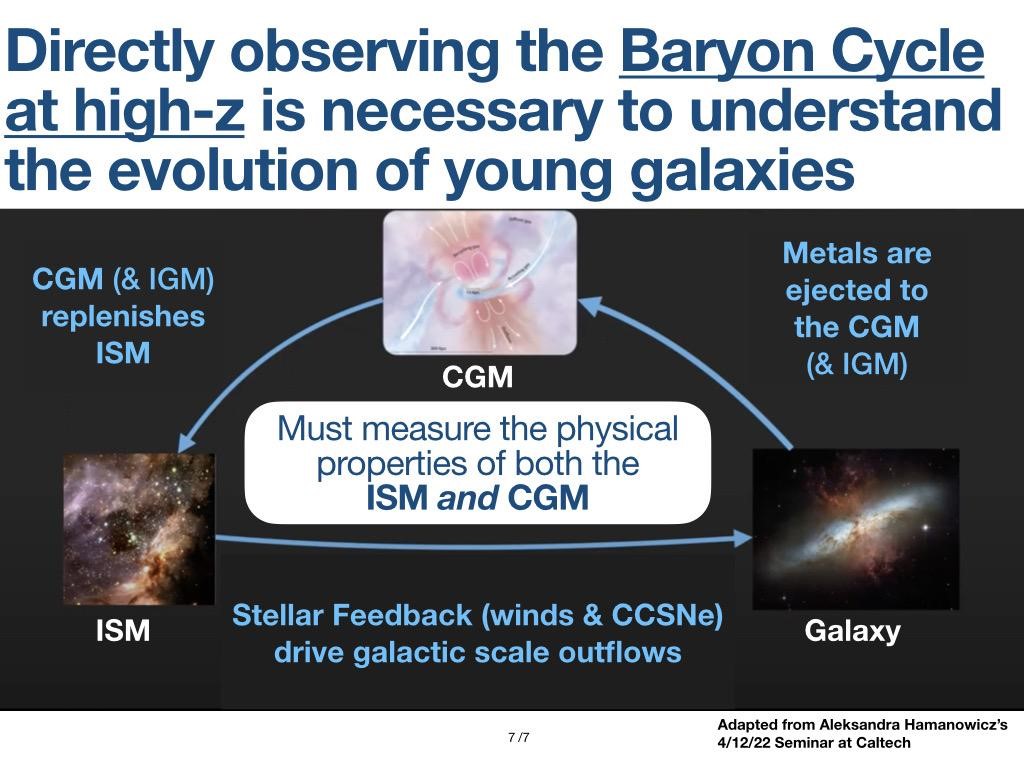Meet the 2022 KISS Affiliates

Evan Haze Nunez
Grad student in the Division of Physics, Math and Astronomy
Hometown: Torrance, CA
Date of this Interview: June 15, 2022
What do you research?
I research how young galaxies evolve during the era in the universe where stars are forming at their highest rate (2-3 billion years after the big bang). Specifically, I trace the hydrogen and metals in the outer regions of galaxies that were ejected from the massive stars in the galaxy while simultaneously measuring stellar and gas properties inside of the galaxy. Studying both components is important because they contain information about the internal and external processes that are driving the galaxy's evolution (e.g., the Baryon Cycle; see Figure).
Why does space inspire you?
Space holds truths that we cannot even imagine which to me means that we must learn through discovery in order to expand what we deem as possible. Similarly, we grossly underestimated the diversity in our own Solar System-imagine what other revelations exist even further out in the universe.
If you could instantly travel to any point in the universe, where would you choose to go?
Saturn! I have on my bucket list that I want to see Saturn up close with my own eyes before I go. I would also like to take a tour of some of the distant galaxies that I am studying to see what it was like to be in the universe at the peak of cosmic star formation rate density.
Where can you be found when you’re not conducting research?
At the house discovering new music (hip-hop/rap, indie alternative, jazz), learning how to play piano, and playing video games (Switch and PS4); outside on walks, runs, or playing sportsball (basketball, softball, football); or under the stars giving outreach talks and doing amateur astronomy.
What book do you wish you could read for the first time again?
Rendezvous with Rama by Arthur C. Clarke

The Baryon Cycle describes how visible matter (non-dark matter) within a galaxies interstellar medium (ISM; gas and metals between the stars) through various processes can eject material to the galaxies circumgalactic medium (CGM; gas and metals outside of, but gravitationally associated with, the galaxy) which then fall back into the ISM overtime. Understanding the details of the baryon cycle informs us on the internal and external processes that drive galaxy evolution over cosmic time.